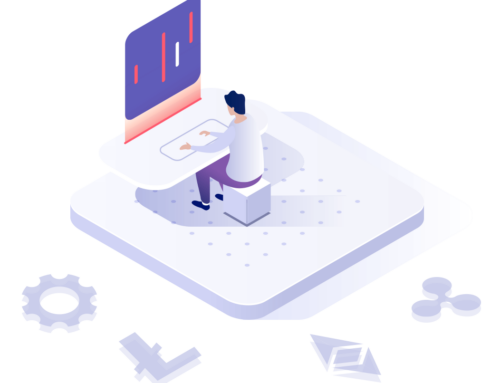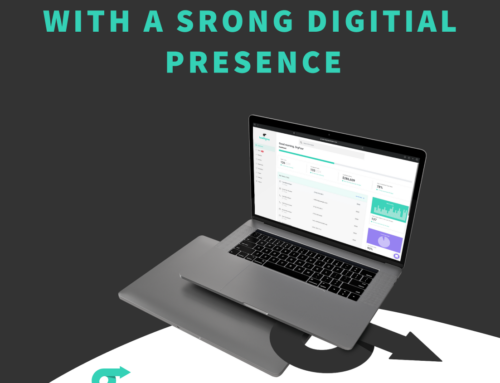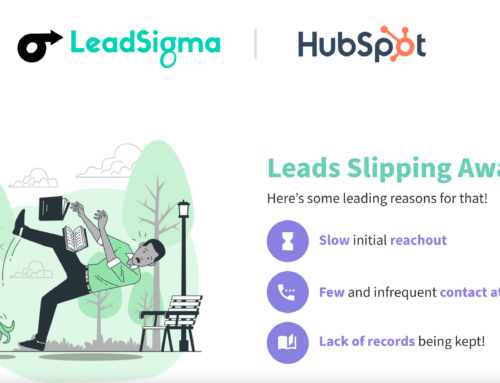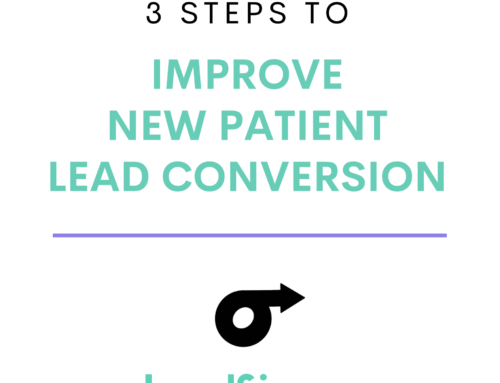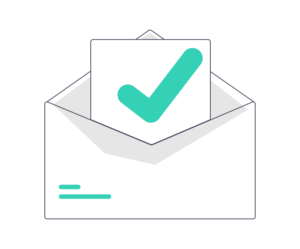In my experience of quickly growing and selling businesses within a variety of verticals, it has been increasingly clear that now more than ever we are facing a different breed of buyer. Not only does each buyer have a continuously shrinking attention span, but they are consumed by a barrage of marketing messages at every turn. Studies have shown that the average American is exposed to 4,000-10,000 advertisements per day (1).
After we attract the attention of our buyers, we must convert interest into revenue expeditiously. A study posted in the Harvard Business Review found that the likelihood of contacting a new lead declines 10x over the first hour. Unfortunately, high value service businesses often neglect to measure (or even consider) speed-to-sale (2).
At LeadSigma, we help businesses attract and convert leads into revenue.
We want to share this sales acceleration playbook to help business owners and sales leaders increase sales velocity and convert more leads into valuable revenue. There are multiple steps to building a successful marketing and sales engine. In the following material we will outline specific strategies as they relate to your brand, your marketing tactics, and your sales actions to create growth that has massive success and large exits for multiple organizations in There are multiple steps to building a successful marketing and sales engine. We will outline specific strategies as they relate to your brand, marketing tactics, and sales actions that have proven to create growth and large exits for multiple organizations in different industries.
Creating and Defining Value
How do you improve buyers’ lives?
The value proposition is how the business provides a secret sauce to customers, unlocking a special benefit to customers that competitors cannot or do not provide.
Typically, the value your service provides is split into three categories:
We make our customers’ lives easier.
We save our customers’ time.
We make our customers’ money.
Most services fall into one or two categories. But if the business is trying to fit its value proposition into all three categories, they are likely weakening the effectiveness of value messaging.
Before we focus on sales and marketing strategy, it is important to fist consider the difference between the real and perceived value that our service offers to potential buyers.
Real value is the actual return that the service delivers, whereas perceived value is the return that buyers think the service will deliver. Sometimes real and perceived values are linear and correlated, but understanding the difference between the two can unlock previously untapped influence over buyers.
For instance, in my last startup (ProfessionalChats), we provided an online chat service to niche market companies. In essence, we provided a way for prospects to interact with the company to lower the sales friction and convert a higher percentage of website visitors into leads. This was the real value. Website + Online Chat = More Leads.
However, when we spoke to buyers, sometimes they were more interested in the ancillary benefits created by having a virtual online chat service. For instance, some buyers found more perceived value in the support that we could deliver to reduce their stress on the weekends and evenings. Although we did create some real value with our customer support, the perception from some buyers was that support was the primary value of our chat service.
Because customer support was the reason that they reached out to us, we framed the sale around the benefit of reduced stress on the weekends and evenings instead of trying to change their minds.
UNDERSTANDING REAL VS. PERCEIVE VALUE WHEN MARKETING AND SELLING DRIVES HIGHER CONVERSIONS.
Defining buyer personas
Once we have defined the exact value of our offering(s), we should consider the nature of our target buyers.
If we do not consider the nature of our target buyers, we will likely be increasing sales friction.
WE SHOULD ALWAYS CREATE PROCESSES AND MESSAGING TO MAKE SALES EASIER, NOT HARDER.
This starts with an acute understanding of target buyers’ pain and how they make purchasing decisions. Without considering the nature of target buyers, we dilute the effectiveness of marketing spend by blanketing broad messaging to a diverse range of buyers and praying that someone takes notice. We call this failing method the “spray and pray approach”. It doesn’t work.
Relying on “spray and pray” marketing wastes resources by chasing diverse buyers who are unlikely to convert as opposed to focusing our message to a smaller, more defined subset of potential buyers who acutely experience the pain we are solving. If you want to immediately increase your marketing ROI, start by gaining a radically specific understanding of your target buyer.
Because all businesses have limited resources to attract the attention of buyers, we should focus on maximizing the effectiveness of our marketing spend. To refine our understanding of our target buyer, we must define who they are, where they are, what they care about, and how they make purchasing decisions.
Who are your target buyers?
Demographic characteristics
- Age
- Gender
- Marital Status
- Education
- Financial Status
- Geography
- Professional Title
These detailed characteristics help develop a clear understanding of our most likely buyers. For instance, if we were selling lawn care services, we would likely be targeting male buyers because males typically care more about the status of their lawn. We might consider targeting male homeowners with a working spouse that are 30+ years old who earn $80k+ annually because they are more likely to be able to afford outsourced lawn care and lack the time to care for their lawn.
By increasing our detailed demographic understanding of our target buyer, we are more likely to market to the people most likely to buy our service.
WHERE DO TARGET BUYERS SPEND THEIR TIME AND HOW DO THEY BEHAVE?
- What digital platforms do they use?
- Where do they spend time?
- What are their recreational activities?
- Are they problem solving (goal oriented) or aspirational?
WHAT / WHO INFLUENCES TARGET BUYERS?
- What publications do they read?
- What are influential figures in their life?
- What podcasts do they listen to?
- What focums/websites do they visit?
- To whom, specifically, do they turn for advice?
WHAT ARE TARGET BUYERS’ OBJECTIVES AND GOALS?
- What do they ultimately care about?
- What are they aspiring to achieve?
WHEN DO THEY MAKE PURCHASING DECISIONS?
- Is there cyclicality in their behavior?
- When do they feel the pain that your service solves?
- What immediately precedes their potential interest in your service?
Building the pipeline
Sales pipelines can be extraordinarily complex and multifaceted. When most businesses think about their pipeline, their first thought is often lead generation, i.e. the top of the funnel.
Since lead generation is the primary revenue growth fuel, this begs us to answer the question; what drives lead generation? The answer is brand strategy.
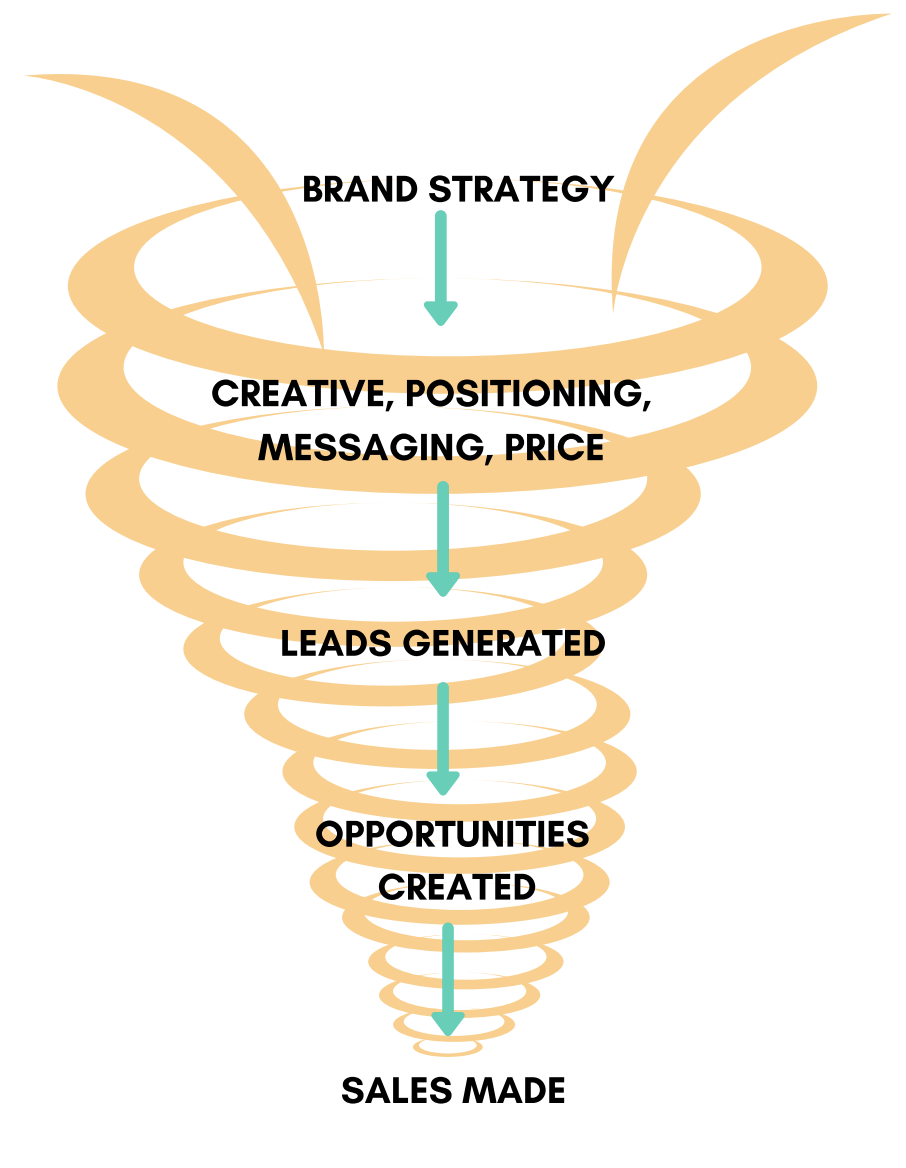
Brand strategy
To understand brand strategy, we must differentiate brand strategy from marketing.
Brand strategy is focus on the value and authenticity of the organization or service.
Marketing is tactical, focusing on capturing the day-to-day attention of buyers.
Brand strategy defines the rules and parameters of the sandbox within which marketing plays.
The natural extension of brand strategy is demand generation.
Demand generation
Once the foundation has been laid by creating an excellent brand strategy, the next consideration is driving demand for the service. Demand generation is a comprehensive sales and marketing approach used to attract the attention, conversion, sale, retention, and revenue growth from target buyers.
Inbound Campaigns
Digital Ads
Journal/Blog
Search Engine Marketing
Social Media Marketing
Webinars
Search Engine Optimization
Outbound Campaigns
Cold Email
Sales Prospecting
Partnerships
Paid Partners/Resellers
Joint Ventures
Key Opinion Leaders/Influencers
Reducing sales friction
Sales friction is the potential barrier(s) that exist between the customer and their goals. Regardless of how fine tuned the sales process, sales friction still exists in every organization.
Let’s consider a trip to the grocery store. Where is the potential sales friction?
- Finding a parking space
- Finding/cleaning a shopping cart
- Finding the items on your list
- Waiting in line for the cashier
- Transfering items from shelf to cart, cart to bag, and bag to car
Do you want to go to the grocery store if it’s difficult to find parking, the carts are scattered and dirty, the store does not indicate the items on each aisle, and you have to frequently wait for a cashier?
Of course not! But any combination of these potential friction points, no matter how small, decreases the likelihood of new or recurring sales.

Amazon, known for reducing sales friction, has solved grocery store friction in two ways.
Using Amazon.com, you can search for exactly what you need from your couch; and once it’s in your cart, you can “buy it now.” No parking, no searching, no lugging groceries around, no checkout process.
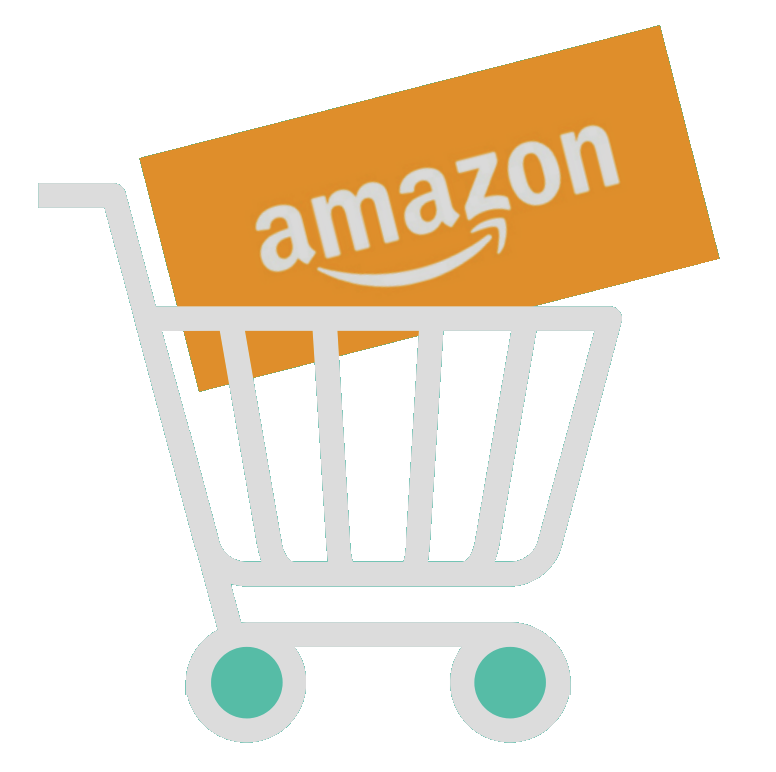
For buyers that like to see their produce before they purchase, Amazon has created a near frictionless experience with the Amazon Go store.
To shop at the Go store, you simply scan your phone on the way into the store, put your groceries in bags as you shop, and leave. No register, no transfer of groceries from cart to bags, no card swipe.
One of the common points of sales friction for both the customer and the sales rep occurs immediately after the lead is generated.
How fast do we contact the new lead? Do we continually follow-up or just make one or two attempts at contact?
The average business takes 42 hours to respond to an inbound lead, yet 75% of customers buy from the business they speak to first!
LeadSigma helps dramatically reduce sales friction by giving customers a system which ensures immediate contact for inbound leads and a data-driven daily task list for repeat contact attempts.
Call SlingshotTM turns your online forms into dynamic conversion opportunities. Within seconds of an online form submission, Call SlingshotTM places a call to the business phone, provides the lead’s information in real time, and connects the business with the lead in less than 30 seconds. With Call SlingshotTM, prospects are on the phone with your business before they have the opportunity to continue shopping!
In addition, Call SlingshotTM fills your sales pipeline with all of the leads’ data in case of a failed initial contact attempt. Not only can LeadSigmaTM ensure immediate contact of inbound leads, but can also guarantee that every warm lead is being contacted frequently by way of phone, text, and email to increase the likelihood of a conversion.
Sales friction happens for the sales rep when leads are disorganized and there is no existing process for routinely contacting interested buyers. LeadSigma eliminates sales friction for service businesses all across the world.
Sales metrics simplified
Although marketing and sales should work hand-in-hand to create new and renewed demand for the service, it is the sales team’s responsibility to close the business once a lead has been generated and sales materials are created.
Sales metrics help us gain crucial insights into the effectiveness of the process. There are two categories of metrics to consider:
Lagging Indicators – Displays the current results of our process
Leading Indicators – Indicates the future results of our process
Nearly every sales pipeline can be simplified into three core metrics

Leads Generated

Opportunities Created

Sales Made
Each of these three areas of focus are driven by leading indicators.
Leads Generated

Possible leading indicators – email open rates, website bounce rates, time on page, click through rate, and webinar attendance
Opportunities Created

Possible leading indicators – leads generated, speed-to-lead, and lead contact frequency
Sales Made

Possible leading indicators – opportunities created, appointments kept, proposals sent, same day closes
Compound growth
Sales metrics themselves are less valuable than the processes which drive each metric.
Let’s explore an example.
A solar company is trying to drive more leads through digital ads. They are promoting a free estimate to educate consumers on the long term efficiency, tax advantages, and cost savings of solar power vs. traditional power.
Their process might look like this:


Assuming all things equal, if their ads drive 5% more leads, by extension, they should schedule 5% more estimates and close 5% more sales.
Naturally, we want to do everything possible to drive a higher number of leads.
But what happens if we refine each stage of the buyer’s journey?
To impact the individual metrics, we must understand what drives each metrics performance. To start, we have listed a few topics that drive each metric.
Leads Generated
- Ad targeting
- Ad copy
- Landing page design
- Clear and compelling calls to action
Estimate Scheduled
- Speed of lead follow up
- Consistency of lead follow up
Sale Made
- Sales material
- Sales presentation
- Creating urgency
- Strong closing language
Using the example from above, let’s show the ad to a more relevant audience. Let’s say we target homeowners with a higher household income, we might be able to drive 5% more leads into the process. But when we expand our focus to every part of the process, the results can compound quickly.
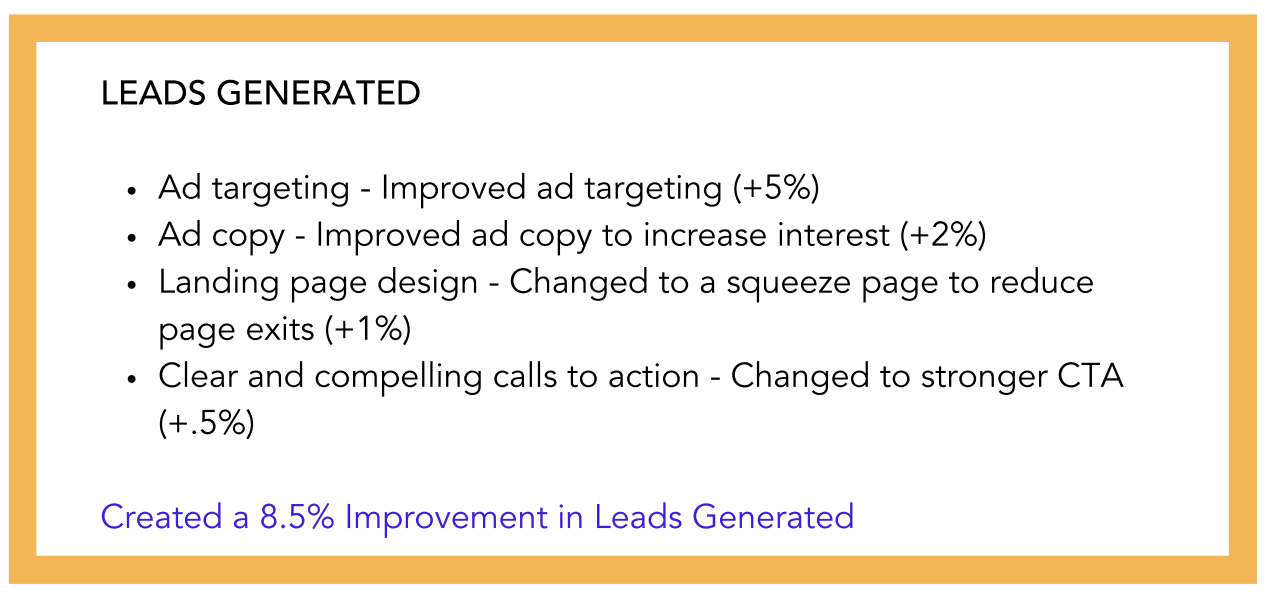
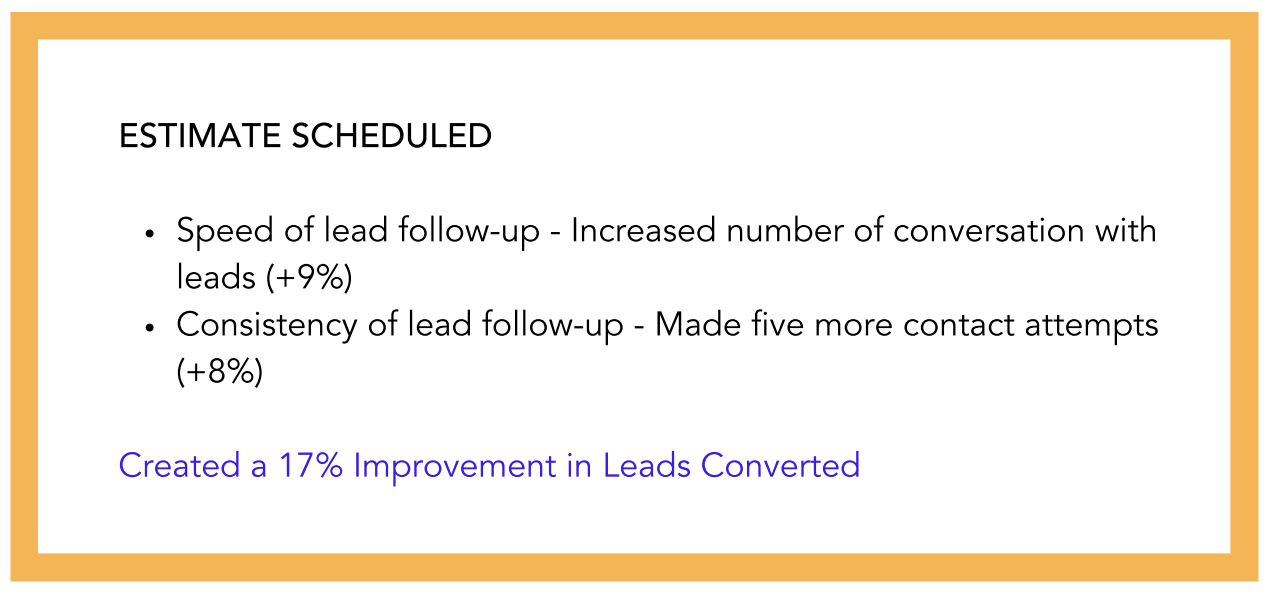
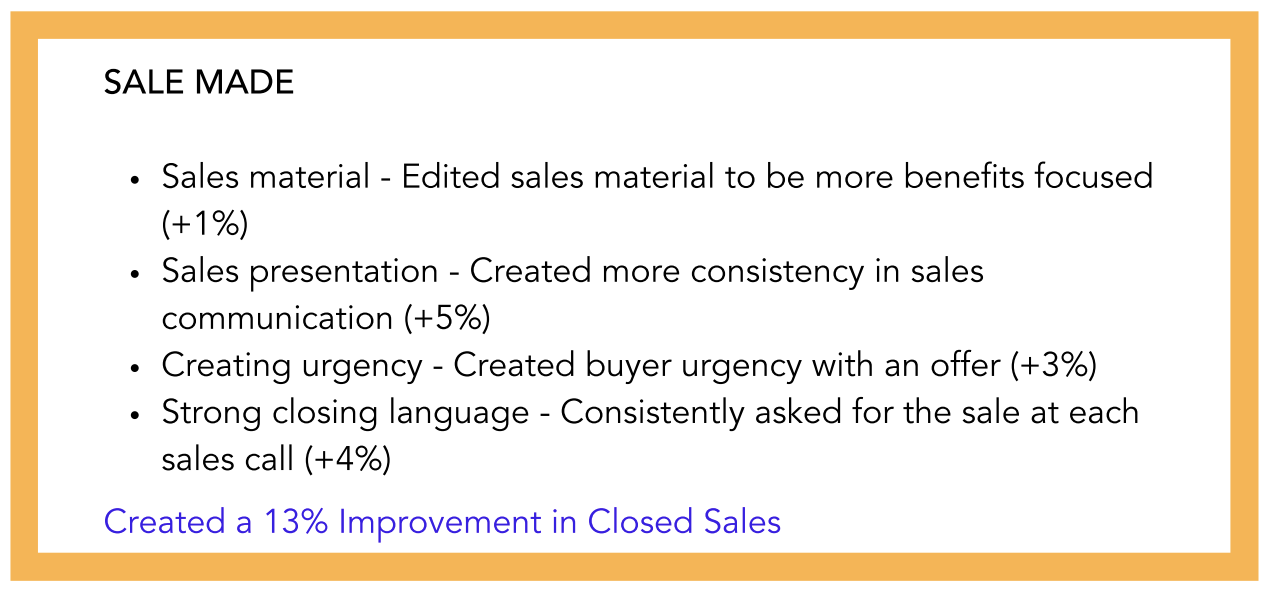
When you look individually at each stage of the buyer journey, the results do not seem dramatic. These are incremental changes to each aspect of the process. But when you consider the compounding effect, the results are astounding!
At first glance, it looks like we created 38% growth (8.5% + 17% + 13%); however, compound growth works just like compound interest. The real growth we created was 43% (108.5% X 117% X 113%)!
We can make an outsized impact on revenue creation by gaining focus on every stage of the buyer journey and making incremental improvements.
Conclusion
Accelerating sales is a multifaceted process. It takes an acute understanding of your target buyer, excellent branding, outstanding marketing, and ends with a clearly defined sales process which eliminates sales friction and creates an easier path for compound revenue growth.
At LeadSigma, we are always ready to help clients (and non-clients) produce faster sales, improved responsiveness, and a more thorough understanding of the buyer journey.
If you are interested in a systematic approach to accelerating sales in your organization, please use the below link to schedule a demo with LeadSigma.
About the author
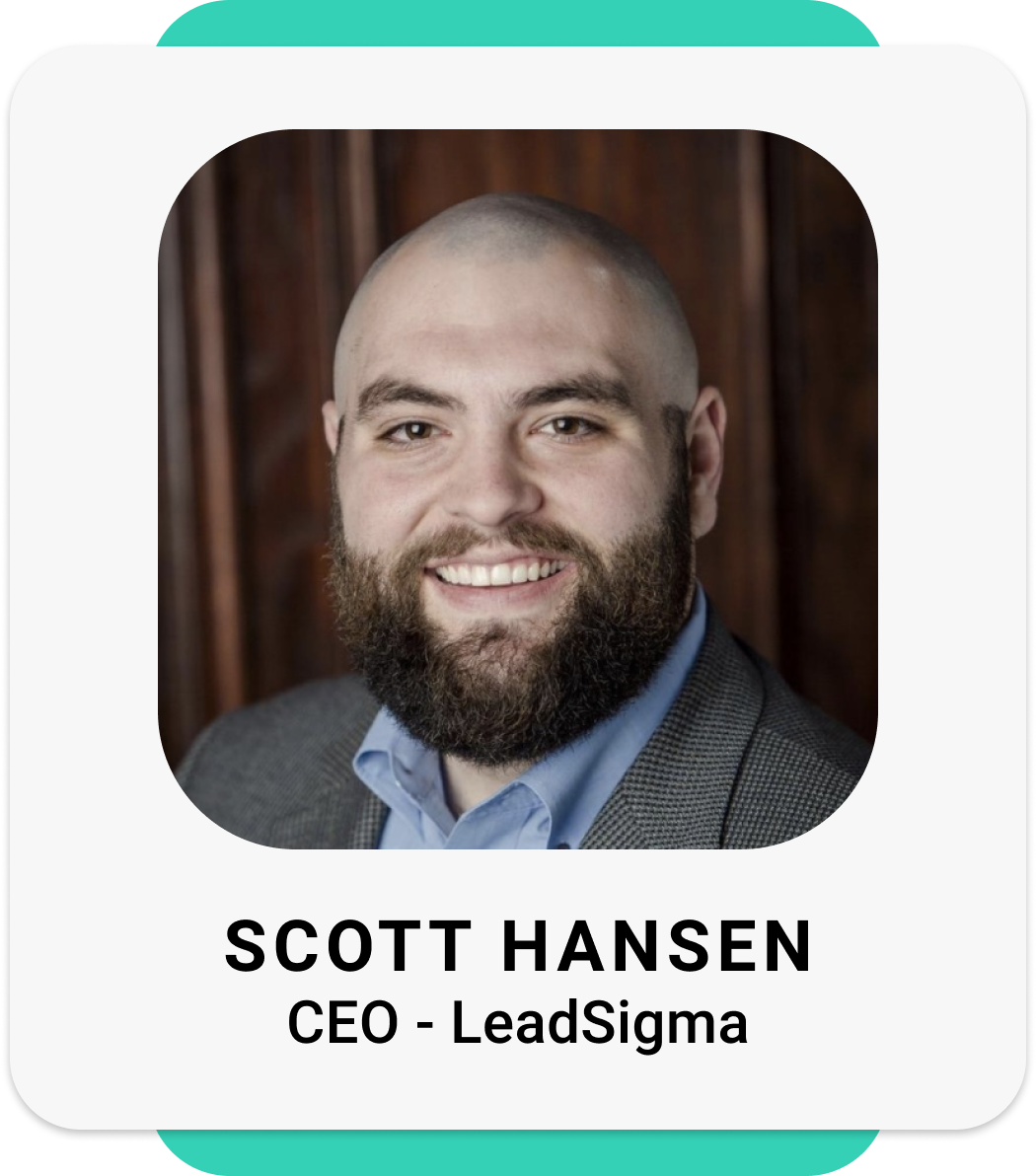
Scott Hansen is a successful executive and serial entrepreneur who has a track record of creating massive value inside and outside of the orthodontic space. Scott founded ProfessionalChats (OrthoChats) in 2016 and bootstrapped its profitable growth to 150 employees before exiting to Ruby Receptionists in 2018. Prior to ProfessionalChats, Scott rebranded his family’s orthodontic practice, turning it into one of the fastest growing businesses in the US, earning consecutive Inc. 5000 awards. Scott is now the founder and CEO of LeadSigma, where he is creating the world’s best solution for closing more new patients, faster.


